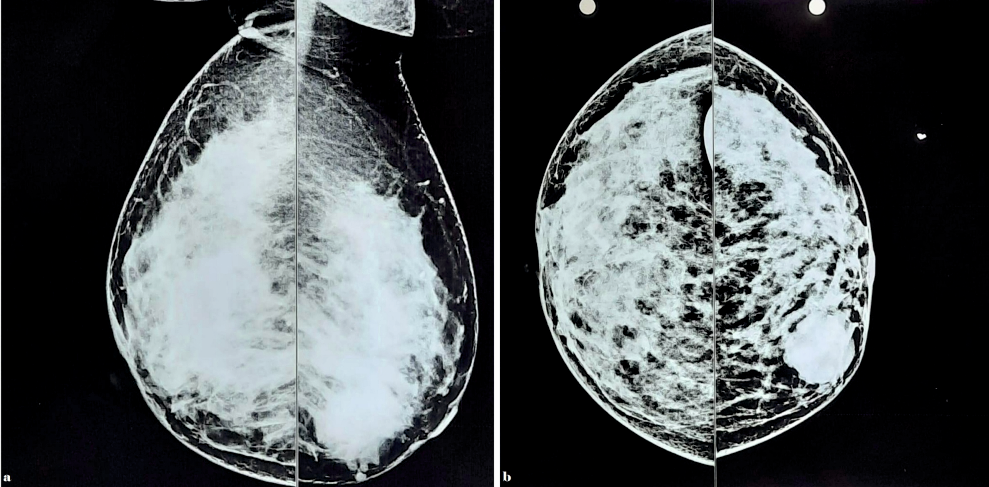Giant cell tumor of the breast masquerading as a malignant breast tumor: a case report
Keywords:
Giant cell tumor, Osteoclastic giant cells, Breast, ImmunohistochemistryAbstract
Introduction: Giant cell tumours of the soft tissue (GCT-ST) are usually found in the superficial and deep soft tissues of the extremities but have been described in the pancreas, lung, thyroid gland, urothelial tract, skin, larynx, heart and very rarely, in the breast. At present, according to the World Health Organization's classification of soft tissue tumors, GCT-ST is categorized as an intermediate grade (rarely metastasizing) fibrohistiocytic tumour. GCT of the breast is extremely rare and to date, only eleven cases have been reported. We report a case of GCT of the breast, which was clinically suspected as a malignant tumor and discuss the different treatment modalities with the importance of close follow-up of the same after a thorough review of the literature.
Case Presentation: We report a case of a 45-year-old woman who noticed a tender lump in her left breast. A malignant tumour was suspected on clinical examination and imaging. Histological evaluation revealed a tumour composed of a mixture of round and oval mononuclear cells with minimal atypia and uniformly distributed multinucleated osteoclast-like giant cells (OGCs) with a stroma rich in blood vessels. IHC was done in which the OGCs stained positively for CD68 and CD45, mononuclear stromal cells were positive for vimentin whereas the tumour was negative for breast markers Progesterone Receptor (PR), Estrogen Receptor (ER), GATA 3, epithelial marker EMA, S-100 and Desmin; hence the definitive diagnosis of GCT of the breast was made.
Discussion: GCT of the breast, due to its rareness and the malignant-mimicking clinical presentation, causes difficulty in diagnosis. Other giant cell-rich lesions including breast cancer with OGCs, pleomorphic leiomyosarcoma, osteosarcoma, undifferentiated pleomorphic sarcoma and metastatic GCT-B are to be considered in the differential diagnosis.
Conclusion: GCT of the breast is an extremely rare tumour and pretends a breast malignant tumours. For the correct diagnosis of this rare tumour, combining the results of histological and immunohistochemical analyses helps in ruling out differential diagnosis.

Additional Files
Published
How to Cite
License
Copyright (c) 2023 Puja Bhavesh Jarwani, Virat Rameshbhai Patel, Raval Ravinderkumar Chhabra, Vidhyasagar Sharma, Anupama Raval

This work is licensed under a Creative Commons Attribution-NonCommercial 4.0 International License.
